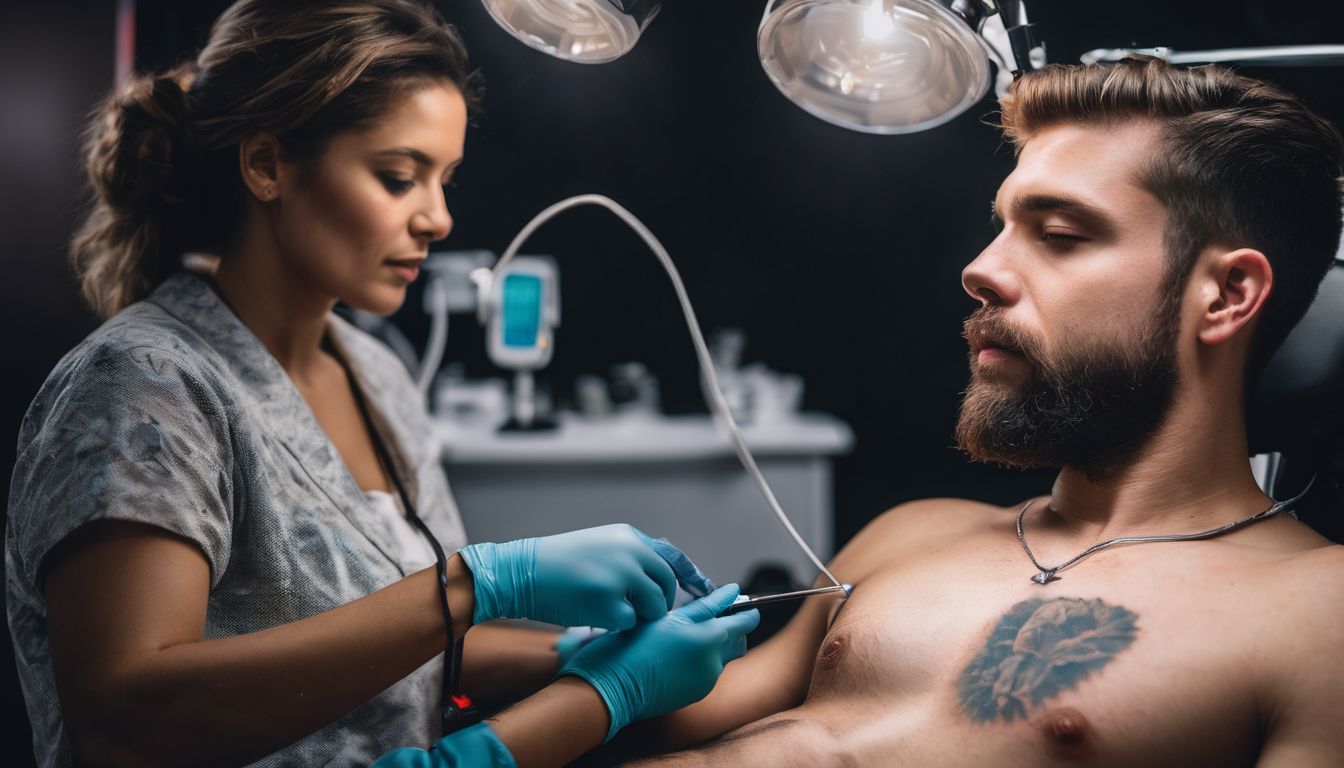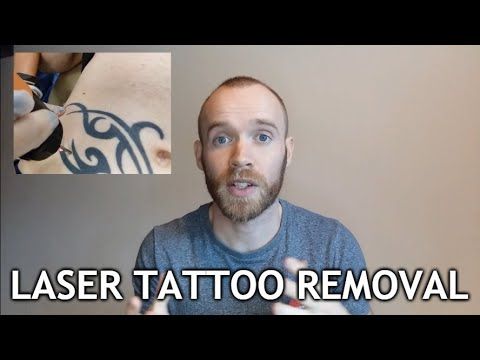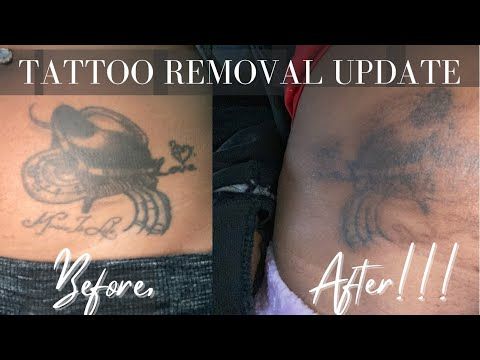Tattoo Removal Before and After: What to Expect from the Process
Deciding to remove a tattoo is a big step. One important fact to remember is that it’s not an overnight process, but one that may require patience and multiple sessions. Our blog will guide you through what to expect from the laser tattoo removal journey, including before and after scenarios.
Keep reading to unveil the transformation story of your ink!
Key Takeaways
- Laser tattoo removal involves breaking up ink particles using high – intensity light, with each session gradually fading the tattoo until it becomes less visible.
- Factors such as skin type, tattoo size, color, and location play a significant role in the laser tattoo removal process, making each person’s experience unique.
- Understanding potential side effects like blisters, swelling, temporary darkening of the treated area after each session is crucial for realistic expectations about the healing process.
- Before your laser tattoo removal session, avoid actions like sun exposure and applying numbing creams to ensure optimal results and minimize potential risks.
The Laser Tattoo Removal Process
Laser tattoo removal works by breaking up the pigment of the tattoo using high-intensity light beams. The process is unique to each individual and their specific tattoo, with factors like ink colors, placement, and skin type all playing a role in how effective the treatment will be.
How Does Laser Tattoo Removal Work?
Laser tattoo removal targets the ink beneath your skin with pulses of highly concentrated light. These bursts of energy heat up and break the ink particles into tiny fragments. Once shattered, your body’s natural immune system kicks in, gradually flushing out these smaller bits over time.
During each session, different wavelengths of light may be used to treat various colors in your tattoo. The process is cumulative; multiple treatments are often necessary to achieve full fading.
Your skin needs time to heal between sessions, typically six to eight weeks as recommended by experts for optimal results. Over several appointments spaced months apart, you’ll notice the tattoo become lighter until it’s no longer visible.
Every Person and Their Tattoo Is Unique
Each individual’s skin type, tattoo size, color, and location play a role in the laser tattoo removal process. The response to treatment varies based on these factors, making each person’s experience unique.
Factors such as the depth of the ink, age of the tattoo, and overall health can impact how quickly one sees results. Additionally, certain tattoos may fade more easily than others due to their composition or placement on the body.
Understanding that every person’s journey through tattoo removal is distinct underscores the importance of tailored treatment plans and realistic expectations.
Can Any Type of Tattoo Be Removed?
Tattoo removal via laser is effective for different types of tattoos, including professional, amateur, traumatic, and cosmetic. However, certain factors like tattoo color and depth can influence the ease of removal.
For instance, black ink is typically easier to remove than brightly colored inks due to its ability to absorb all laser wavelengths. Tattoos made with darker pigments are generally more responsive to treatment compared to lighter shades.
The success of tattoo removal also depends on the skin type and individual healing processes. Factors such as the location of the tattoo on the body and age can also affect how well a tattoo responds to removal treatments.
The Fading Process in Laser Tattoo Removal
The fading process in laser tattoo removal involves breaking down the ink particles in the skin. This happens as the body’s natural processes work to eliminate the pigment from the tattoo.
Over time, with each treatment, the tattoo gradually fades until it becomes less visible. It is essential to space out treatments for effective results, allowing adequate time for the body to process and remove the pigment.
As each session builds on the last, changes in the appearance of the tattoo become apparent after multiple treatments. The fading process may take 6-12 weeks for noticeable changes to occur between sessions.
This cumulative effect ultimately leads to successful removal over time.
How often can you get Laser Tattoo Removal?
Laser tattoo removal treatments should be spaced six to eight weeks apart to allow the skin time to heal. It is recommended to wait three months between sessions for optimal results.
The process is cumulative, with each treatment building on the last, and a complete removal may take over two and a half years. Aftercare instructions play a crucial role in facilitating healing and minimizing potential side effects post-treatment.
Understanding how often laser tattoo removal can be done is essential for managing expectations during the gradual fading process.
Laser Tattoo Removal the Truth about Side Effects
To ensure the best outcomes from laser tattoo removal, it’s crucial to understand its potential side effects. After each session, common post-treatment symptoms might include blisters, swelling, tattoo rising, pinpoint bleeding, redness, and temporary darkening of the treated area.
Moreover, the healing process can lead to swelling and redness as well. On average, it takes 6-12 weeks for the body to process the pigment of the tattoo during removal. However, despite these possible side effects and symptoms following treatment sessions, many individuals find that they are manageable and resolve on their own over time.
It is essential to approach laser tattoo removal with realistic expectations about its potential side effects. The process works by eliminating pigment in the skin through natural bodily processes.
Before and After: What to Expect
When it comes to laser tattoo removal, understanding the before and after process is important. From before and after pictures to the healing process and potential risks, this section will cover what to expect from your laser tattoo removal journey.
Before & After Pictures
Before and after pictures are a powerful tool in setting realistic expectations for laser tattoo removal. They provide visual evidence of the removal process’s progression and outcomes. These images capture the appearance of the tattoo at various stages, revealing the effectiveness of the treatments over time. Seeing real-life examples can help manage expectations and give potential clients an idea of what the process can achieve.
| Stage | Description | Timeframe |
|---|---|---|
| Before Treatment | Tattoo is fully visible with original colors and clarity. | Initial consultation |
| After 1st Session | Slight fading may be noticeable, swelling and redness common. | 6-12 weeks post-treatment |
| Midway Through Process | Significant fading, some areas may clear more quickly than others. | Several months into treatment |
| Final Results | Tattoo may be completely removed or barely visible, depending on a variety of factors. | Minimum of two and a half years |
These visuals often reveal the tattoo removal’s cumulative nature, with each session incrementally fading the ink. Symptoms like blisters and temporary darkening may appear post-treatment, as indicated in the photos. The healing process, including swelling and redness, can also be visualized through these comparative images.
Let’s move on to the healing process to understand what happens to the skin after the laser does its work.
The Healing Process
After seeing the before and after pictures of tattoo removal, it’s essential to understand the healing process. Here’s what to expect:
- The skin may appear red, swollen, or blistered immediately after treatment, and these symptoms can last for a few days.
- It may take 6 – 12 weeks for the body to naturally process the pigment of the tattoo during the removal process.
- Temporary darkening of the treated area is common and will gradually improve as the skin heals.
- Proper aftercare is crucial to minimize any potential side effects and support the skin’s healing process.
- Blisters, swelling, tattoo rising, pinpoint bleeding, and redness are expected post – treatment symptoms that should gradually subside.
- It’s important to protect the treated area from sun exposure to aid in the healing process and prevent complications.
- Following each treatment session, it’s essential to keep the area clean and moisturized to promote optimal healing.
- In some cases, mild scabbing or crusting may occur as part of the natural healing process; it’s essential not to pick at these areas to avoid scarring.
- The body will continue to eliminate fragmented ink particles over time as part of the ongoing healing process between treatments.
- Close monitoring of any changes in the appearance of your tattoo during the healing phase can provide insights into how effectively laser tattoo removal is working.
Risks and Side Effects
After understanding the healing process, it’s important to be aware of the potential risks and side effects that can occur during and after laser tattoo removal. Here are some things to consider:
- Blisters may develop, particularly in the days following treatment, as a natural part of the body’s healing process.
- Swelling is common and often peaks within 48 hours after treatment, subsiding over the next few days.
- Temporary darkening or lightening of the skin in the treated area may occur, which usually resolves over time.
- Pinpoint bleeding might happen during or immediately after the procedure as the laser breaks down the ink particles.
- Redness and tenderness can be expected for a few weeks as part of the healing process.
- In rare cases, scarring may occur; taking proper care and following aftercare instructions helps minimize this risk.
- While relatively uncommon, infection is a possible side effect that should be monitored closely and reported to your practitioner if suspected.
- Changes in skin texture such as an increase or decrease in pigmentation in the treated area are possible outcomes of laser tattoo removal.
- Allergic reactions to ink particles released during treatment may occur; they are usually mild but should still be brought to your practitioner’s attention.
Preparing for Laser Tattoo Removal
Before your session, avoid tanning and do not take any blood-thinning medications. Can you get a tattoo after laser tattoo removal? Find out more about the preparation process and what to expect from the treatment.
What You Shouldn’t Do Before Your Session
To prepare for your laser tattoo removal session, it’s essential to avoid certain actions that could affect the treatment and your skin. Here are important things to avoid before your session:
- Avoid sun exposure or tanning beds as they can make your skin more sensitive and increase the risk of side effects.
- Do not apply any numbing creams or lotions before the treatment, as they can interfere with the effectiveness of the laser.
- Refrain from getting a new tattoo in the area intended for removal, as this can complicate the process and affect the results.
- Avoid using harsh exfoliants or chemical peels on the tattooed area, as these can irritate the skin and interfere with the laser treatment.
- Do not consume alcohol 24 hours before your session, as it can thin the blood and increase the risk of bleeding during treatment.
- Avoid taking anti – inflammatory medications such as aspirin or ibuprofen, as they can also increase the risk of bruising and bleeding during treatment.
- Refrain from waxing or plucking hair in the area to be treated before your session to prevent skin irritation.
Can You Get a Tattoo After Laser Tattoo Removal?
You can get a new tattoo after laser tattoo removal once the treated area has fully healed. It is essential to consult with your practitioner before getting a new tattoo, as it’s crucial to ensure that the skin has completely recovered from the previous removal process.
Following the recommended healing time will help minimize any potential risks or complications associated with getting a new tattoo.
After completing laser tattoo removal, it’s important to consider factors such as the type and location of your new tattoo, ensuring you discuss this with your practitioner.
Laser Tattoo Removal for Dark or Black Skin
After understanding the possibility of getting a tattoo post laser removal, it’s important to consider the specifics for dark or black skin. Laser tattoo removal on darker skin tones requires an experienced practitioner who understands the complexities involved.
Due to higher melanin levels in dark skin, more caution is needed during treatment to avoid hypopigmentation or hyperpigmentation. The type of laser used and the settings must be carefully selected to minimize the risk of adverse effects such as scarring or changes in skin texture.
Factors such as the age and color of the tattoo, along with any previous scarring, need careful evaluation before proceeding with laser removal on dark or black skin. It’s crucial to consult a specialized professional who can provide tailored advice based on individual characteristics and ensure safe and effective results without compromising skin integrity.
The Importance of Proper Aftercare
Proper aftercare is essential for the best results in laser tattoo removal. It can help minimize side effects and promote faster healing. Understanding how to care for the treated area is crucial in ensuring a successful outcome.
Can Tattoos Change the Way You Sweat?
Tattoos can impact the way you sweat, as the presence of ink in your skin can affect the sweat glands. The pigment from tattoos may block or alter the function of sweat glands, leading to changes in sweating patterns.
This can result in reduced perspiration and potentially impact your body’s ability to regulate temperature during physical activity or exposure to heat.
The presence of tattoos on the skin might lead to a decrease in sweat output due to potential damage caused by tattooing needles and ink particles. As a result, individuals with extensive tattoo coverage may experience differences in how their bodies respond to heat and physical exertion.
Does Laser Tattoo Removal Cause Skin Cancer?
Laser tattoo removal does not cause skin cancer. The laser targets the ink in the skin, breaking it up into tiny particles that are gradually removed by the body’s natural processes.
It is crucial to follow post-treatment care instructions and use sunscreen on the treated area to protect it from potential sun damage.
Understanding the safety measures of laser tattoo removal is essential for achieving successful results and ensuring optimal healing. Proper aftercare can help minimize any risks associated with the treatment while promoting effective fading of unwanted tattoos.
How to Care for the Treated Area
After laser tattoo removal, it is crucial to care for the treated area to ensure proper healing and minimize potential side effects. Here are some important tips for caring for the treated area:
- Keep the area clean and dry to prevent infection.
- Apply an antibiotic ointment or cream as recommended by your practitioner to aid in healing.
- Avoid exposing the treated area to direct sunlight or tanning beds to prevent pigmentation changes.
- Use a non – stick dressing if necessary to protect the area from irritation and friction.
- Do not pick at any scabs or blisters that may form, as this can lead to scarring.
- Follow any additional instructions provided by your tattoo removal practitioner regarding aftercare.
Conclusion
In conclusion, understanding what to expect before and after laser tattoo removal is crucial. The process involves multiple treatments over an extended period, with each session contributing to the final results.
It’s essential to be aware of the potential side effects, healing process, and the importance of proper aftercare for successful tattoo removal. With patience and following recommended guidelines, individuals can achieve significant progress in fading or completely removing their tattoos through laser treatment.
FAQs
1. What can I expect from my skin after laser tattoo removal?
After laser tattoo removal, you can expect your skin to go through a fading process where the tattoo gradually becomes lighter with each treatment.
2. Will there be scars from removing my tattoo?
Scar after tattoo removal is rare as modern techniques are designed to minimize this risk, but it’s important to follow proper care instructions for the best healing process after tattoo removal.
3. How long does it take to see results from neck or facial tattoo removal?
Results vary, but usually, you’ll notice changes quickly since neck and facial tattoos often respond faster than other body areas due to better blood circulation aiding in the fading process.
4. Can dark-skinned individuals have successful before and after transformations with tattoo removal?
Absolutely! Tattoo removal for dark skin has come a long way with specific lasers providing safer and effective outcomes, though individual results may vary.
5. What should I look at when viewing before and after photos of others who’ve had their tattoos removed?
When checking out before-and-after photos, look closely at the level of fading achieved through the treatments and note any potential healing challenges like redness or peeling as part of recovery.
6. Do all tattoos fade equally well with laser treatment options or creams?
Not exactly; some colors in tattoos remove easier than others with lasers while creams might not offer consistent results which makes consulting a professional crucial for evaluating different technique results during your first consultation.







